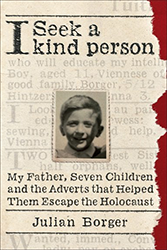In Victoria Shorr’s third novel, The Plum Trees, the author tells a moving story inspired by her own family’s history. Consie returns home to Ohio for a funeral, but when she inadvertently discovers an old letter detailing the possible escape of her great-uncle from Auschwitz she becomes deeply interested in the vicious events that are etched into her family’s past. This history comes alive as the author takes us back to 1940s Europe, where the majority of the story unfolds as great-uncle Hermann, his wife, and three daughters experience the Holocaust first- hand.
Consie becomes obsessed with learning what happened to her great-uncle in the brutal final year of World War II, scouring records, databases, and oral interviews with Holocaust survivors. By shifting focus from Consie’s present to the 1940s, the author shows how Consie’s concepts of present and past merge together. Shorr wants to highlight the importance of family history to our identities. This is especially true for Jews whose ancestors endured the horrors of the Holocaust. Like many others, Consie struggles to find facts, truths, and sense in the retelling of a senseless time in history.
Throughout the narrative, plum trees and plums represent home, family, connection, and childhood for the characters, beginning with the plum trees at Hermann’s home in Czechoslovakia. Even Consie, who loved sharing plums with her grandfather in her youth, finds the connection to her heritage and familial roots through plums. It’s some seventy years later and the symbolic fruit holds as much meaning for Consie as it did for Hermann and his daughters.
The Plum Trees is a powerful story of familial history and the hold that the past has over us today. The all-consuming search for answers is a common thread for families who have been affected by the Holocaust. Shorr manages to depict this dynamic by blurring the distinction between present and past, a technique that demonstrates the undeniable significance of ancestral trauma on current and future generations. Consie uncovers a lot of answers, while a lot of questions remain unanswered. The power of this novel is that the protagonist strengthens her connection to her family and her ancestry through her curiosity and the journey on which her investigation takes her.
Anastasia Shymanovich currently lives and works in New York City. She graduated UNCG with a BA in sociology.




